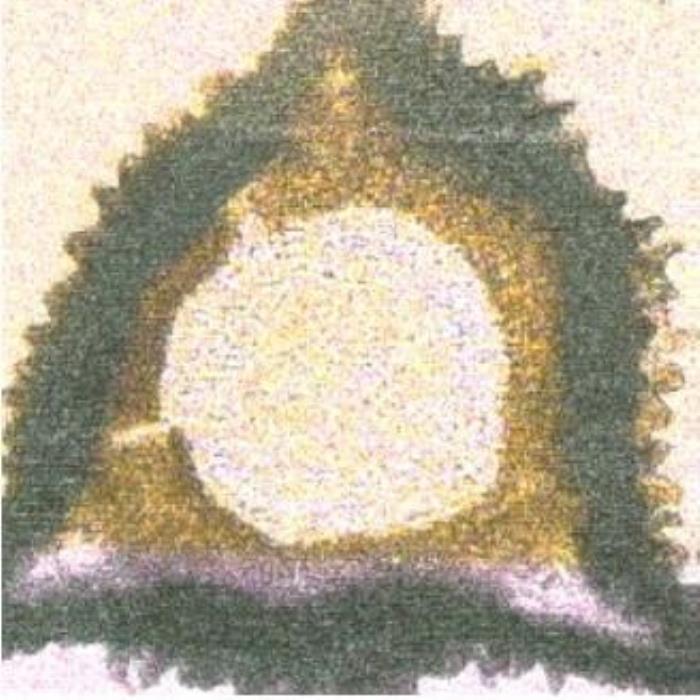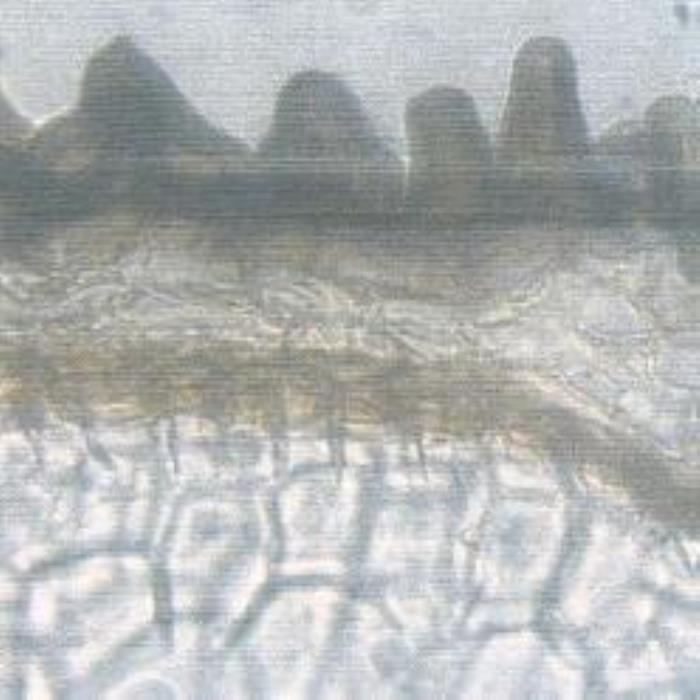
Nigella sativa / الحبة السوداء
Alhabah Alsodaa, Habat Albaraka; Cumon Aswad, Showneez
Black seed, Black Cumin
Alhabah Alsodaa, Habat Albaraka
Ranunculaceae

Flowers

Seeds
Ethnobotanical Characteristics
Description
Annual herb,30-50 cm high, pubescent or glandular-hirsute. Leaves much divided, finely pinnate, leaf- segments linear to linear-lanceolate. Flowers solitary at end of branches, blue, star-shaped, sepals 5, petaloid, oval c.7-14x 6-8mm, shortly clawed; petals smaller than the sepals, 5(-8), nectariferous, with a bent claw and two lobes, stamens numerous, carpels 2-10 fused with five free styles. Fruit several follicles, crowned by persistent styles, many-seeded, brownish when ripe; seeds dark grey to black, trigonous, wrinkled, white and oleaginous inside and aromatic.
Habitat & Distribution
The plant is found wild in southern Europe, northern Africa, Asia Minor and in the Mediterranean region, but has been cultivated into other parts of the world including Saudi Arabia, Mediterranean countries, northern Africa and parts of Asia, in UAE rarely cultivated in private farms.
Part Used
Seeds, oil
Traditional & Medicinal Uses
The seeds are acrid, bitter, aromatic, thermogenic, carminative, diuretic, emmenagogue, anodyne, antibacterial, anti-inflammatory, digestive, appetizer, anthelmintic, febrifuge, stimulant, galactagogue, expectorant and sudorfic. The seeds are also used for cough, amenorrhea, flatulence, jaundice, dyspepsia, inflammation, paralysis, skin, eyes, respiratory, stomach and liver problems, diarrhea, dysentery and dysmenorrheal.
Pharmacognosy and Phytochemistry
Parts Studied
Seed
Microscopic Description
The epidermis of the testa is composed of compact polygonal cells with straight thick cell walls and they are rich in dark-coloured pigments. The parenchyma of the testa are also polygonal and they show beaded thick cell walls and the cell pigment contents are dark orange to red in colour. The outermost layer of the endosperm is composed of compact whitish parenchyma cells. The endospermic parenchyma are also polygonal and are rich in fatty material (DPS, ZCHRTM unpublished results).

a) TS of seed

b) Papillose cells

c) Endosperm
- (a). A general TS of the seed near the tip showing its typical pyramidal shape. Shown from outside are the papillose cells and normal epidermal cells (dark purple) then layers of parenchymatous cells (light brown) and then the circular light pink area of the endosperm.
- (b). TS of the seed showing the outer most group of papillose cells with thick cells walls followed by normal oval epidermal cells underlain by layers of parenchyma followed by the yellowish-brown colored collenchymas (outermost layer of the endosperm) then the polygonal endospermic cells.
- (c). TS at the seed endosperm polygonal cells some of which are almost square in outline. Those to the right side are filled with aleurone grains and other substances while those on the left side contain oil droplets. (Magnifications: x 100, x 400 and x 400, respectively).
Organoleptic characteristics
Appearance: Solid powder
Colour: Grayish black
Odour: Spicy
Taste: Hot
Physicochemical constants
Loss in weight on drying at 105°C (%): 6.10
Solubilities (%)
Alcohol solubility: 34.80-36.80
Water solubility: 12.00
10% ethanolic extractive: Not done
Ash values (%)
Total ash: 4.50
Water soluble ash: Nil
Acid-insoluble ash: 0.33
Successive extractive (%)
Petroleum ether (60-800C): 37.0-38.3
Chloroform: 1.5-1.6
Absolute alcohol: 550-5.90
Distilled water: Not done
pH values
pH of 1% solution: 6.14
pH of 10% solution: 5.97
Chemical constituents
Volatile oil (1.5%) consists of carvone (45-60%), carvene (limone, a terpene) and cymene. Seeds yield 38% of fixed oil. Negellimine N-oxide, Citronellol, Nigellicine and thymoquinone have also been reported form seed. (Buckingham 1994, DPS, ZCHRTM unpublished results).
Pharmacological and Toxicological Studies
Nigella seeds showed CNS and analgesic activity (Khanna and Zaidi, 1993); anti-inflammatory activity (Ali and Ammar, l997); antimicrobial effect (Morsi, 2000), diuretic and hypotensive effects, (Zaoui and Cherrah 2000); antiviral activity (Salem and Hossain, 2000). Nigella sativa L. oil protects against induced hepatotoxicity and improves serum lipid profile in rats (El-Dakhahny and Mady et al., 2000). Hepatoprotective activity of the isolated fraction has also been shown (Daba and Abdel, l998).
Barkat et. al., 2000); antioxidant activity of aqueous extract (Mansoor, et. al., 2001) has been reported. Immunomodulatory effect of Nigella sativa proteins (Haq and Lobo, 1999) and of ethanolic extract of Nigella sativa L. seeds reported (Swamy and Tan, 2000).Subchronic toxicity has been carried out (Badary et .al., l998). Black seeds are reported to have preventive effect of skin tumors induced by 7,12- dimethylbenz (l) anthracene in mice (El-Dhakhahny and Abdel et. al., l997). The plant enhances its anti-tumor activity in mice (Badary, l999). Anti-tumor activity of some crude and purified compound has been shown by Nigella sativa (Worthen and Ghosheh, l998).
The pharmacological and toxicological studies carried out in ZCHRTM laboratory (Aqueous extract). The results presented without references showed unpublished data (unpublished data, ZCHRTM, DBMS):
|
ACTIVITY |
RESULTS |
|
Sexual studies-Copulatory activity (Acute activity) |
The extract did not show any sexual stimulant activity (Copulatory activity). |
|
Sexual studies-ICP |
Significant increase in Intracavernous pressure (ICP) was found. |
|
Anti-asthmatic activity-Tracheal Chain |
Produced mild relaxation in histamine and ACH pre-contracted tracheal chain. |
|
Anti convulsion activity |
Showed mild protective effect. |
|
Antidepressant activity |
Showed significant antidepressant effect. |
|
Acute toxicity studies |
Found safe at the dose tested. |
|
Antidepressant activity |
Showed significant antidepressant activity. |
|
Anti-convulsant activity |
Showed significant anti-convulsant activity. |
|
Anti convulsion activity |
Showed mild protective effect. |
|
Estrogen activity |
Failed to produce estrogenic activity. |
|
Sub-acute toxicity test |
Sub-acute administration of oil in the animals treated for 15 days showed no overt signs and symptoms at the dose tested. |
Summary of the results
The extract showed significant intracavernous pressure showing erectile activity. However, did not show any sexual stimulation in coupulatory experiment. The extract showed significant antidepressant activity and mild anticonvulsant activity in mice. The extract and oil of Nigella sativa showed no overt signs and symptoms of toxicity at the dose tested.
Antimicrobial activity
Extract of Nigella sativa seeds caused various concentration inhibition of Staphylococcus aureus, Bacillus cereus, Pseudomonas aeruginosa, Escherichia coli, Salmonella typhimurium and a pathogenic yeast Candida albicans (DM, ZCHRTM; Hanafy et al., 1991; Khan et al., 2003). On the other hand, black seed oil exhibited a striking antiviral effect against murine cytomegalovirus (MCMV) infection which may be mediated by increasing of macrophages; number and function, and interferon (IFN)-gamma production. (Salem et al., 2000).
References
- Akhtar, A. H., K. D. Ahmad, (1996). Antiulcer effects of aqueous extracts of Nigella sativa and Pongamia pinnata in rats. Fitoterapia 67(3): 195-199.
- Ali, H. A., M. Aqeel, (1993). Hypoglycemic effects of the volatile oil of Nigella sativa seeds. International Journal of Pharmacognosy 31(2): 96-100.
- Ali, O. S. Y., N. M. Ammar, (1997). Studies of some biochemical, nutritional and anti-inflammatory effects of Nigella sativa seeds. Egyptian Journal of Pharmaceutical Sciences 38(4-6): 451-469. Food Sciences and Nutrition Department, National Research Center, Dokki, Cairo, Egypt.
- Andrews, F.W. The Flowering Plants of Anglo-Egyptian Sudan; (1950&1952) vol 1+II; Arbroath, Scotland.
- Badary, O. A. (1999). Thymoquinone attenuates ifosfamide-induced Fanconi syndrome in rats and enhances its antitumor activity in mice. Journal of Ethnopharmacology.
- Badary, O. A., S. O. A. Al, (1998). Acute and subchronic toxicity of thymoquinone in mice. Drug Development Research 44(2-3): 56-61. Dep. Pharmacology, Coll.
- Buckingham,J.(edit). Dictionary of Natural Products,Vol.7, 683, 1994.
- Chevallier, A. The Encyclopedia of Medicinal Plants. (1996) Dorling Kindersley Limited, London. ISBN 0 7513 03143.
- Daba, M. H. and R. M. S. Abdel (1998). Hepatoprotective activity of thymoquinone in isolated rat hepatocytes. Toxicology Letters Shannon 95(1): 23-29.
- Department of Biomedical Sciences, Zayed Complex for Herbal Research and Traditional Medicine, Unpublished results.
- Department of Microbiology, Zayed Complex for Herbal Research and Traditional Medicine, unpublished results.
- Department of Pharmacognostic Sciences, Zayed Complex for Herbal Research and Traditional Medicine, Unpublished results.
- El Ghazali, Gamal, E. B et al. Medicinal Plants of Sudan, Part II, Medicinal Plants of White Nile Province. (1994) Khartoum Univ. Press.
- El, Dakhahny. M., N. I. Mady, (2000). Nigella sativa L. oil protects against induced hepatotoxicity and improves serum lipid profile in rats. Arzneimittel Forschung. 50(9): 832-836.
- El, Dakhahny D. M., M. Barakat, . (2000). Effects of Nigella sativa oil on gastric secretion and ethanol induced ulcer in rats. Journal of Ethnopharmacology. 72(1-2): 299-304.
- El, Dakhahny M. M. M., G. A. M. Abdel, (1997). Prevention of skin tumors induced by 7,12-dimethylbenz anthracene in mice by black seed oil. Oncology Reports 4(1): 139-141.
- El-Dakhakhny M, Mady N, Lembert N, Ammon HP. (2002) The hypoglycemic effect of Nigella sativa oil is mediated by extrapancreatic actions. Planta Med. 68(5): 465-6.
- Ghazanfar, S. A. Handbook of Arabian Medicinal Plants.(1994) Library of Congress.
- Hanafy MS, Hatem ME. Studies on the antimicrobial activity of Nigella sativa seed (black cumin. J Ethnopharmacol. 1991 34(2-3):275-8.
- Haq, A., P. I. Lobo . (1999). Immunomodulatory effect of Nigella sativa proteins fractionated by ion exchange chromatography. International Journal of Immunopharmacology. 21(4): 283-295.
- Khan MA, Ashfaq MK, Zuberi HS, Mahmood MS, Gilani AH. The in vivo antifungal activity of the aqueous extract from Nigella sativa seeds. Phytother. Res. 2003;17(2):183-6.
- Khanna, T., F. A. Zaidi, (1993). CNS and analgesic studies on Nigella sativa. Fitoterapia 64(5): 407-410.
- Kotb, T. F. Medicinal Plants in Libya.(1985) Arab Encyclopedia House. Tripoli-Libya.
- Mansour MA, Ginawi OT, El-Hadiyah T, El-Khatib AS, Al-Shabanah OA, Al-Sawaf HA. (2001) Effects of volatile oil constituents of Nigella sativa on carbon tetrachloride-induced hepatotoxicity in mice: evidence for antioxidant effects of thymoquinone. Res Commun Mol Pathol Pharmacol. 110(3-4): 239-51.
- Miller,A.G. & Cope, T.A. (1996) Flora of the Arabian Peninsula and Socotra; Vol I. Edinburgh Univ. Press. ISBN 07486 04 758.
- Nagi, M. N., K. Alam, et al. (1999). Thymoquinone protects against carbon tetrachloride hepatotoxicity in mice via an antioxidant mechanism. Biochemistry and Molecular Biology International 47(1): 153-159.
- Salem, M. L. and M. S. Hossain (2000). Protective effect of black seed oil from Nigella sativa against murine cytomegalovirus infection. International Journal of Immunopharmacology.
- Salomi, N. J., S. C. Nair, et al. (1992). Antitumour principles from Nigella sativa seeds. Cancer Letters 63(1): 41-46.
- Swamy, S. M. K. and B. K. H. Tan (2000). Cytotoxic and immunopotentiating effects of ethanolic extract of Nigella sativa L. seeds. Journal of Ethnopharmacology. 70 (1): 1-7.
- Warrier,P.K. Nambiar,V.P.K. & Ramankutty C.,Vaidya, Sala A. Indian Medicinal Plants . (1962) Vol I, Orient Longman, Kottakal, India.
- Worthern, D. R., O. A. Ghosheh, et al. (1998). The in vitro anti-tumor activity of some crude and purified components of black seed, Nigella sativa L. Anticancer Research 18(3 ): 1527-1532. Div. Med. Chem. Pharm., Coll. Pharm., University Ky., Rose St., Lexington, KY 40536, USA.
- Zaoui, A., Y. Cherrah, et al. (2000). Diuretic and hypotensive effects of Nigella sativa on the spontaneously hypertensive rat. Therapie London. Mai Juin 55(3): 379-382.
- ھانئ عرموش الأعشاب في كتاب: الاستخدامات الطبیة العلاجیة التجمیلیة التصنيعية ( 1999 ) دار النفائس، دمشق، سوریا
